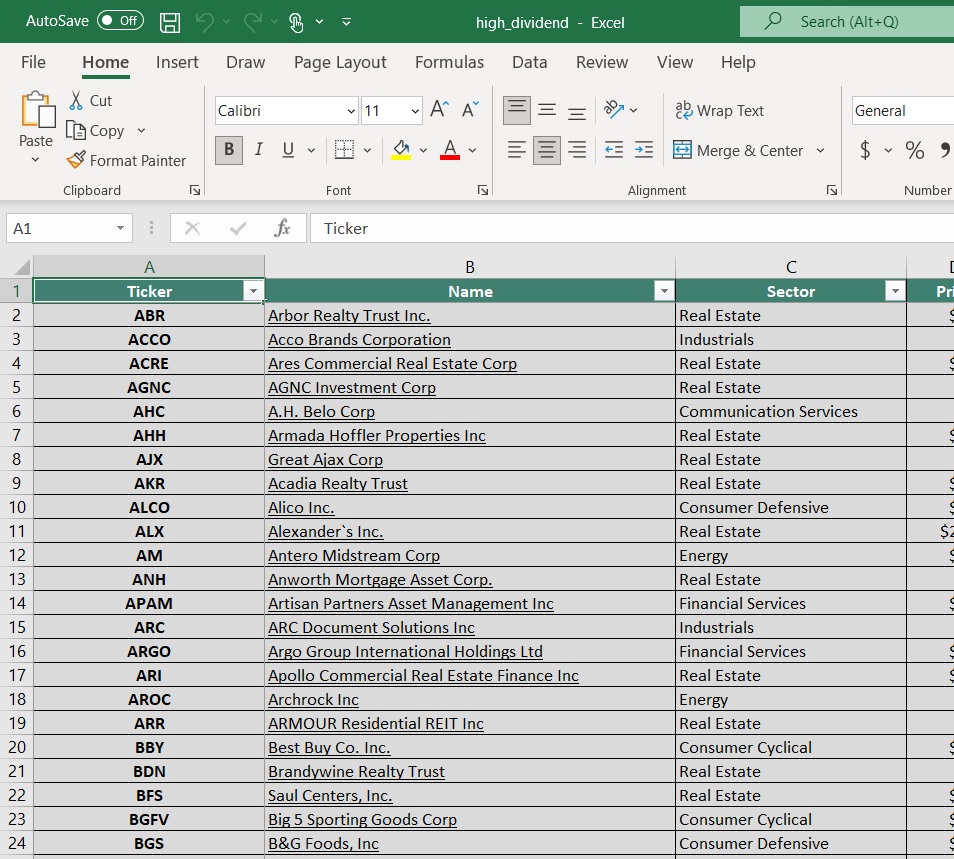This article/post contains references to products or services from one or more of our advertisers or partners. We may receive compensation when you click on links to those products or services
On November 10th, the Bureau of Labor & Statistics (BLS) reported that the Consumer Price Index (CPI) had risen by 7.7% over the previous 12 months. That was down 0.50% from September’s rate of 8.2%, but it’s still much higher than the Fed’s target rate of 2%.
Inflation presents special challenges for investors. Even if your investments are growing in value, inflation is still reducing that value on the back end. The only way to deal with it successfully is to be sure that your money is in investments that are likely to benefit from inflation while avoiding those that tend to be especially hard hit.
So how do you find investments that benefit from inflation, instead of losing their value? Here are eight inflation-proof investments to consider:
Inflation Proof Investments
8 Inflation-Proof Investments Worth Considering
The rapid recovery to pre-coronavirus-crash levels of economic activity — in combination with the trillions of dollars of government stimulation — created the perfect storm of accelerating inflation.
There are no guarantees when it comes to investing for inflation. At best, certain investments may be inflation-safe, but returns can never be guaranteed. Still, any one or a combination of the following asset classes may prove to be a winning strategy.
1. I Bonds
One excellent inflation investment strategy that you can take advantage of in 2022 is to invest in I Bonds. These U.S. savings bonds earn interest based on a fixed interest rate and the inflation rate. The result is an almost risk-free investment that’s backed by the U.S. government and an excellent way to protect your wealth from inflation.
Right now, I Bonds are paying a whopping 9.62%, and you can purchase these bonds at this rate through October 2022. The rate is also applied to the 6 months after you make your purchase. So if you buy I Bonds on June 1st, 2022, the 9.62% rate applies through December 31st, 2022.
I Bond interest compounds semi-annually. Just note that you can only purchase $10,000 of I Bonds per year, and you can’t buy them through your online broker. Instead, you have to visit TreasuryDirect.gov. The minimum purchase amount is $25.
Your I Bonds earn interest for 30 years unless you cash them out earlier. However, you must hold the bonds for at least one year. If you cash out before five years, you lose the previous three months of interest. But at 9.62%, even taking this loss would likely be worth it, and it’s certainly better than just leaving your money in a high-yield savings account.
Also note that the variable inflation rate is calculated twice per year, which depends on changes in the Consumer Price Index. But with inflation rates currently running high, I Bonds are definitely one of the safest and best places to put your money during inflation.
2. Keep Cash in Money Market Funds
Another popular way to invest during inflationary periods is to park your extra cash in a money market account (MMA).
Here are two reasons why this is true:
- Rates money market accounts pay fluctuate continuously with interest rates, and they automatically adjust upwards as interest rates rise. There’s no need to chase higher-yielding cash-type investments.
- Since money market interest rates rise with the general market, you won’t have to face the loss of market value that plagues fixed-rate investments during times of inflation.
When inflation hits, money market funds are interest-bearing investments, and that’s where you need to have your cash parked.
Right now, some of the highest MMA rates can be found at banks like Ally and CIT Bank. Ally is paying 1.15% on all balance tiers and doesn’t have any monthly maintenance fees or minimum balance requirements. As for CIT, it currently pays 1% APY, has a low $100 minimum deposit requirement, and doesn’t charge monthly fees.
This strategy still means you’re technically losing money to inflation. But it’s still better than leaving your cash in a checking or savings account that barely earns any interest.
3. Inflation Is Usually Kind to Real Estate
Over the long term, real estate is also usually an excellent investment response to inflation. Real estate is actually the ultimate hard asset and often sees its greatest price appreciation during periods of high inflation. This is especially true because, as rents rise, people become increasingly interested in owning as a way of getting the tax benefits that help offset the general level of inflation.
And you don’t need to become a landlord to invest in this asset class. In fact, real estate crowdfunding sites let you invest in income-generating real estate, and some just require $10 to start.
We like options like Fundrise since it pays quarterly dividends and only charges 1% in annual management fees. But you can diversify a portion of your portfolio in real estate with these companies to help hedge against inflation.
Alternatively, you can invest directly in individual properties using a platform like Roofstock. But you can also invest in REITs like the Equity Residential (EQR) trust. This trust has more than 300 large apartment complexes, primarily in high-cost markets like New York, Boston, San Francisco, Southern California, Washington, D.C., and Seattle.
However you handle it, real estate should have a place in your portfolio if you anticipate rising inflation.
4. Avoid Long-Term Fixed-Income Investments
The worst investment to put money into, during periods of inflation, are long-term, fixed-rate interest-bearing investments. These can include any interest-bearing debt securities that pay fixed rates, but especially those with maturities of 10 years or longer.
The problem with long-term fixed-income investments is that when interest rates rise, the value of the underlying security falls as investors flee the security in favor of higher-yielding alternatives.
That 30-year bond that’s paying 3% could decline in value by as much as 40%, should interest rates on newly issued 30-year bonds rise to 5%.
Long-term fixed-income investments are excellent when inflation and interest rates are falling. But if you believe that inflation is about to take off, you’d be better off moving your money out of long-term fixed-income investments and into shorter-term alternatives, particularly money market funds.
5. Emphasize Growth in Equity Investments
Many investors try to balance out their equity portfolios by investing in high dividend-paying stocks, or in growth and income funds, and this can work especially well during periods of price stability. But when inflation accelerates, it can hurt your investment returns.
This is at least in part because high dividend-paying stocks are negatively affected by rising inflation in much the same way long-term bonds are.
The better alternative is to invest primarily in growth-type stocks and funds. You should also emphasize sectors that are likely to benefit from inflation. These can include:
- Energy
- Food
- Healthcare
- Building materials
- Technology
Since all are likely to rise in price with inflation, they’re likely to perform better than other equity sectors.
You can invest in these sectors through an ETF fund or you can buy specific stocks that have growth potential. For example, you can invest in energy stocks through the S&P Oil & Gas Exploration & Production ETF (XOP) or Vanguard’s Health Care Index Fund (VHT). Once you have identified what you want to buy, you can purchase it through a broker E*TRADE.
We recommended using these commission-free brokers to buy ETFs:
6. Commodities Tend to Shine During Periods of Inflation
While there isn’t an exact correlation between price levels and commodities, certain hard assets have traditionally been favored by inflation. Precious metals, particularly gold and silver, come to mind immediately. You can hold precious metals in a direct form, with coins or bullion bars, but you can also invest indirectly through ETFs that hold actual gold.
You can also invest in gold mining stocks, or in funds comprised of these stocks. However, these are stocks, and not the actual metal itself. They also tend to be extremely volatile, even during times when gold prices are rising.
A more predictable hold on the stock side will likely be energy stocks and funds. This is especially important since rising energy prices are often one of the primary drivers in inflationary environments.
If you want to invest in commodities, we recommend opening a brokerage account at one of our top-rated brokers. Once you have an account open, you can trade directly through most full-service brokerage firms via a futures fund, options, or an ETF.
7. Consider Other Alternative Asset Classes
If you’re still wondering what to invest in during high inflation periods, you can explore various alternative asset classes. This can also be a wise move when markets are down since many alternative investments don’t correlate strongly, or at all, with general markets.
Examples of popular alternative asset classes and how to actually invest in them include:
You can also explore alternative investment platforms like YieldStreet, which offers a range of funds and individual deals you can invest in starting at $2,500.
Just bear in mind, some of these platforms require being an accredited investor and can have higher minimum investment requirements. But if you want to diversify your portfolio and potentially protect your wealth from inflation, alternative assets are worth considering.
8. Convert Adjustable-Rate Debt to Fixed-Rate
Technically speaking, this is not actually an investment move, but it could be one of the most profitable strategies you can make in response to rising inflation.
Periods of low or declining inflation favor adjustable rates over fixed rates when you borrow money. But the dynamic reverses when inflation rises. Higher inflation results in higher interest rates, which means that as inflation accelerates, your adjustable rates will continue to rise — even to potentially unsustainable levels.
If you believe inflation is coming, you should begin rolling your adjustable-rate debt over to fixed rates. This should include credit cards, home equity lines of credit, and especially your first mortgage if it happens to be an ARM.
Talk to your loan provider to see what options are available. It’s a good idea to also check the paperwork on your loan to see when your rates will increase so you can plan. If you refinance your mortgage, try to lower the repayment period and avoid resetting your 30-year mortgage. You will end up paying a lot less in interest, even if your monthly payments remain the same or are higher.
The Bottom Line
As the Federal Reserve eases its monetary policy and begins to raise interest rates, the hope is that the inflation rate will eventually settle and begin to decrease.
But that will take time. For now, repositioning is important. Adding just a few investments that tend to perform well in inflationary environments could help your portfolio survive, and perhaps even thrive, during this period of runaway inflation.












